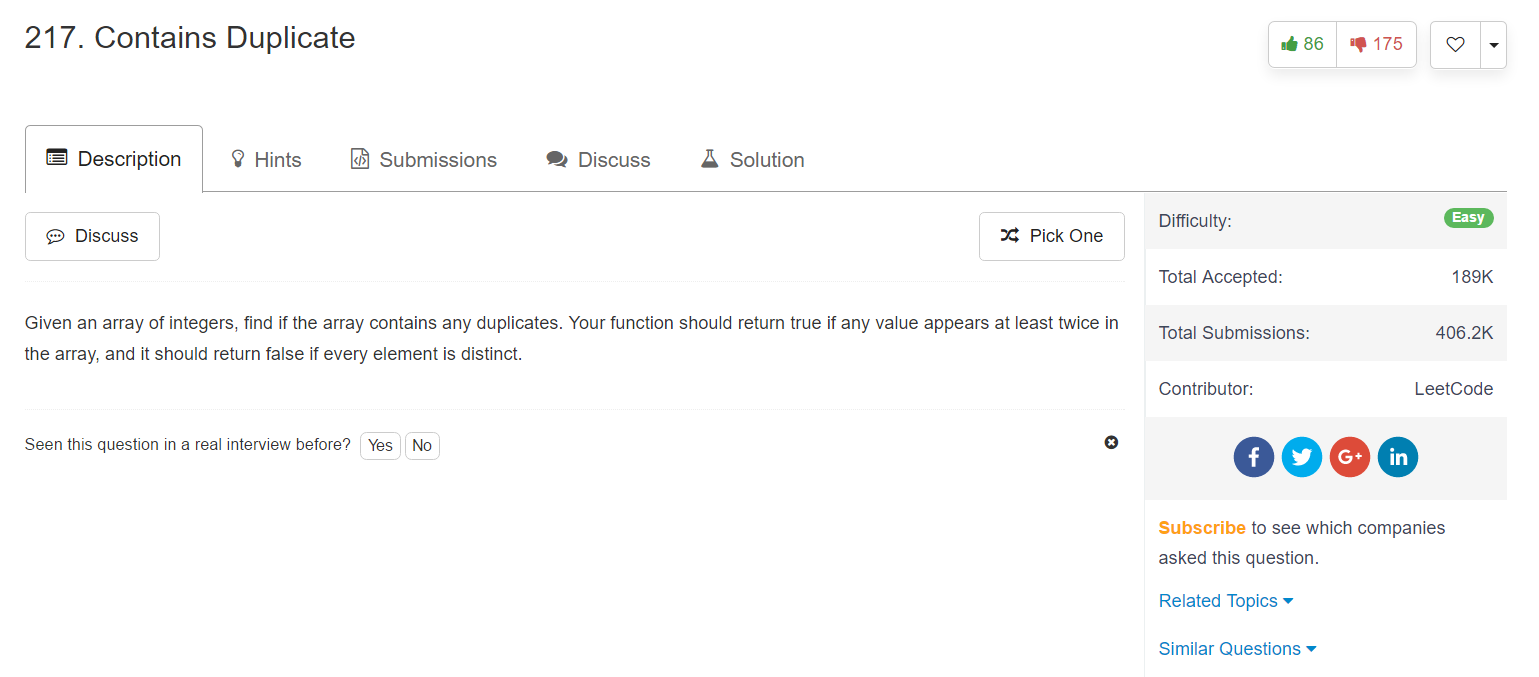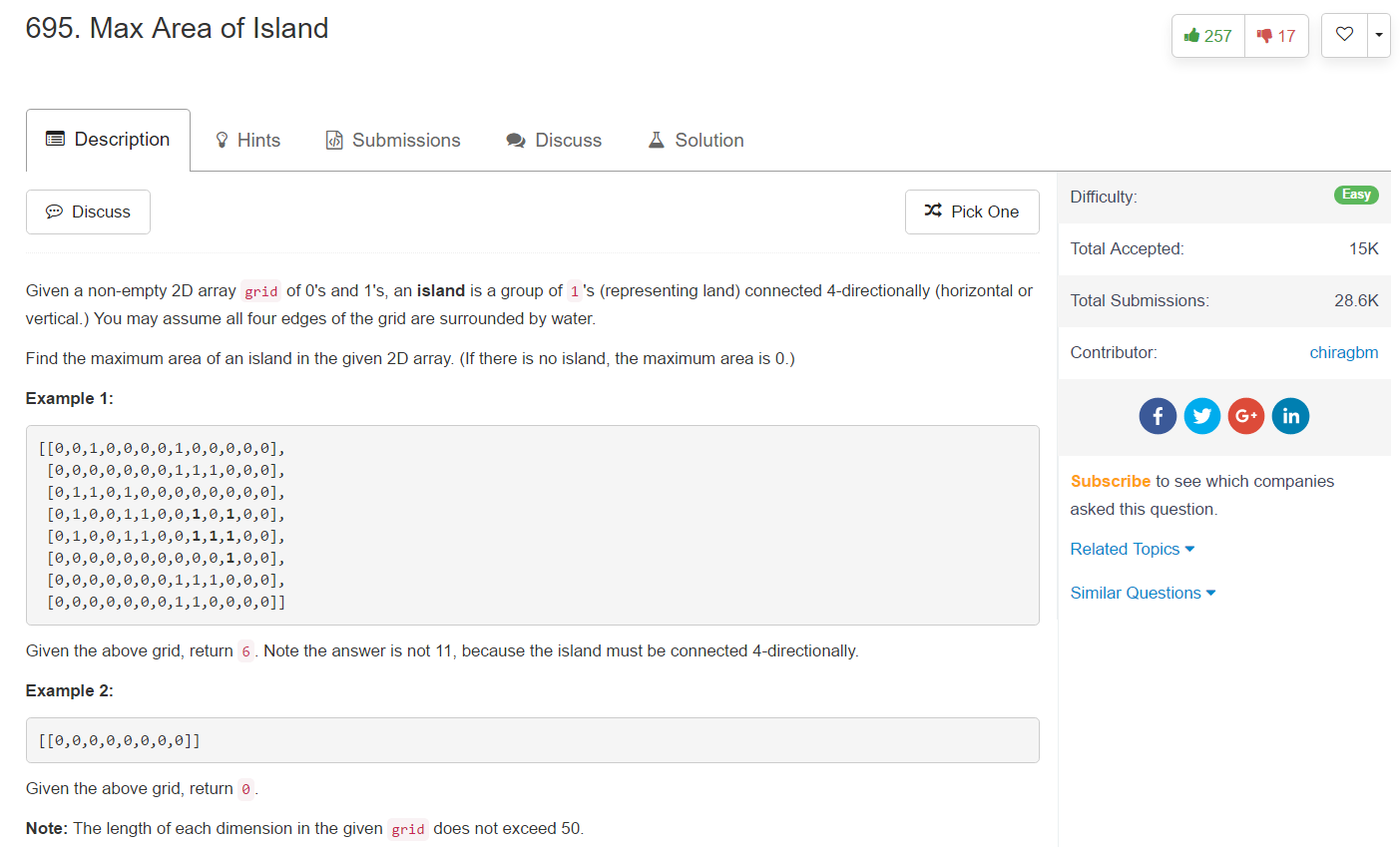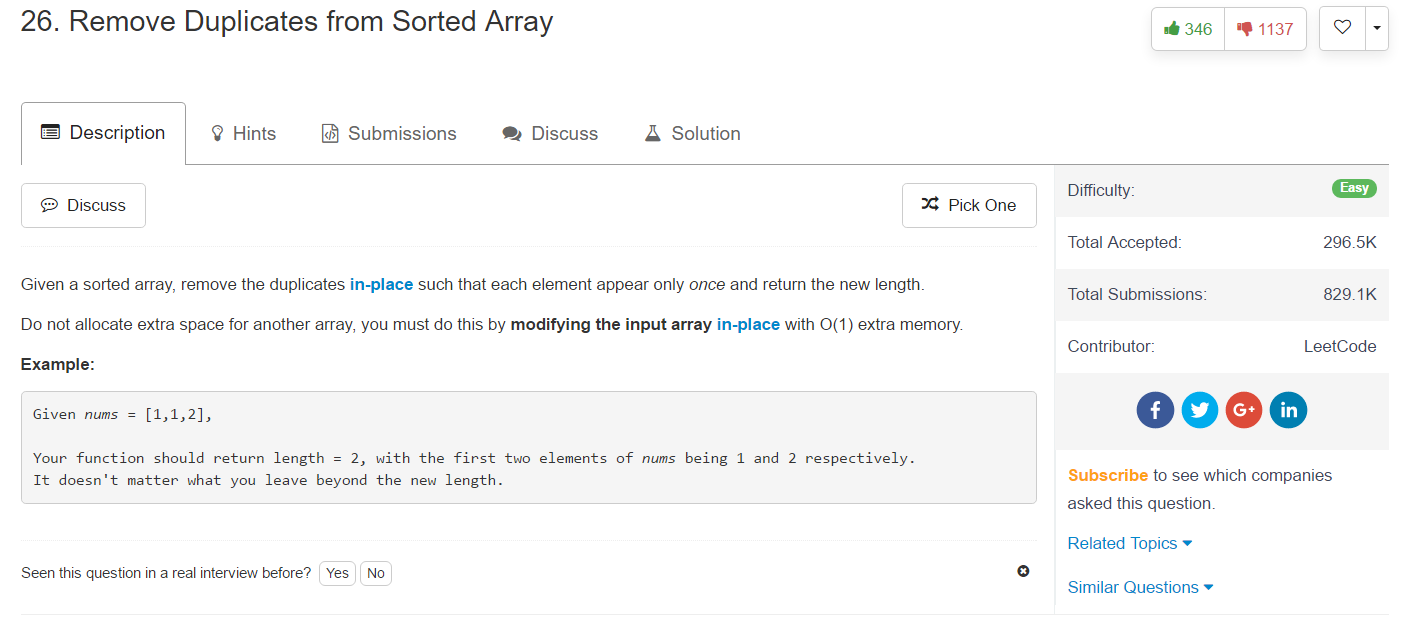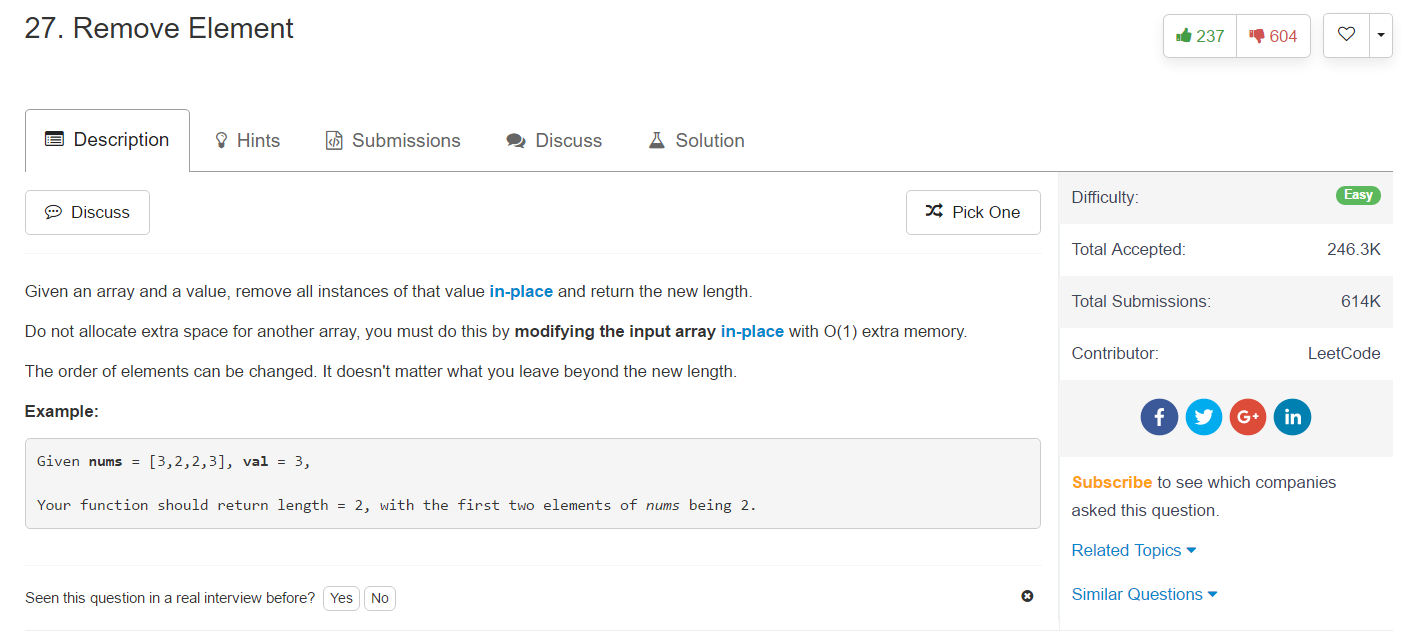LeetCode第二天&第三天
leetcode 第二天
2017年12月27日
4.(118)Pascal's Triangle

JAVA
class Solution {
public List<List<Integer>> generate(int numRows) {
List<List<Integer>> triangle = new ArrayList<List<Integer>>();
//当numRows = 0 的情况
if(numRows == 0) return triangle;
//当numRows != 0 的情况
triangle.add(new ArrayList<Integer>());
triangle.get(0).add(1);
for(int i = 1; i <numRows;i++){
List<Integer> curRow = new ArrayList<Integer>();
List<Integer> preRow = triangle.get(i-1);
//first element
curRow.add(1);
for(int j = 0 ;j<preRow.size()-1;j++){
curRow.add(preRow.get(j)+preRow.get(j+1));
}
curRow.add(1);
triangle.add(curRow);
}
return triangle;
}
}
Python
def generate(self, numRows):
"""
:type numRows: int
:rtype: List[List[int]]
"""
triangle = []
if numRows == 0:
return triangle
triangle.append([1])
for i in range(1,numRows):
curRow = []
preRow = triangle[i-1]
curRow.append(1)
for j in range(len(preRow)-1):
curRow.append(preRow[j]+preRow[j+1])
curRow.append(1)
triangle.append(curRow)
return triangle
leetcode 第三天
2018年1月3日
5.(217)Contains Duplicate

JAVA
// T:O(nlogn) S:O(1)
public boolean containsDuplicate(int[] nums) {
Arrays.sort(nums);
for (int i = 0; i < nums.length - 1; ++i) {
if (nums[i] == nums[i + 1]) return true;
}
return false;
}
T:O(n) S:O(n)
public boolean containsDuplicate(int[] nums) {
Set<Integer> set = new HashSet<>(nums.length);
for (int x: nums) {
if (set.contains(x)) return true;
set.add(x);
}
return false;
}
6.(717)1-bit and 2-bit Characters

JAVA
class Solution {
public boolean isOneBitCharacter(int[] bits) {
int i = 0;
while (i<bits.length - 1){
i += bits[i]+1;
}
return i == bits.length-1;
}
}
class Solution {
public boolean isOneBitCharacter(int[] bits) {
int i = bits.length - 2;
while (i >= 0 && bits[i] > 0) i--;
return (bits.length - i) % 2 == 0;
}
}
Python
class Solution(object):
def isOneBitCharacter(self, bits):
i = 0
while i < len(bits) - 1:
i += bits[i] + 1
return i == len(bits) - 1
class Solution(object):
def isOneBitCharacter(self, bits):
parity = bits.pop()
while bits and bits.pop(): parity ^= 1
return parity == 0
7.(119)Pascal's Triangle II

Java
class Solution {
public List<Integer> getRow(int rowIndex) {
List<Integer> result = new ArrayList<Integer>();
if(rowIndex < 0) return result;
for(int i = 0 ;i <= rowIndex;i++){
result.add(1);
for(int j = i-1 ; j > 0 ; j--){
result.set(j,result.get(j)+result.get(j-1));
}
}
return result;
}
}
8.(695)Max Area of Island

JAVA
递归
class Solution {
int[][] grid;
boolean[][] seen;
public int maxAreaOfIsland(int[][] grid) {
this.grid = grid;
int result = 0;
seen = new boolean[grid.length][grid[0].length];
for(int r = 0;r<grid.length;r++)
for(int c = 0 ;c<grid[0].length;c++)
result = Math.max(result,area(r,c));
return result;
}
public int area(int r,int c){
if(r<0||r>=grid.length||c<0||c>=grid[0].length||seen[r][c]||grid[r][c]==0) return 0;
seen[r][c] = true;
return 1+area(r-1,c)+area(r,c-1)+area(r+1,c)+area(r,c+1);
}
}
9.(26)Remove Duplicates from Sorted Array

JAVA
class Solution {
public int removeDuplicates(int[] nums) {
int newLength = 1;
if(nums.length == 0) return 0;
for(int i = 0;i<nums.length;i++)
if(nums[newLength-1] != nums[i]){
nums[newLength]= nums[i];
newLength++;
}
return newLength;
}
}
10.(27)Remove Element

JAVA
class Solution {
public int removeElement(int[] nums, int val) {
int newLength = 0;
if(nums.length ==0) return newLength;
for(int i = 0;i<nums.length;i++)
if(nums[i]!=val)
nums[newLength++] = nums[i];
return newLength;
}
}
11.(121)Best Time to Buy and Sell Stock

JAVA
class Solution {
public int maxProfit(int[] prices) {
int profit = 0;
int min = Integer.MAX_VALUE;
for(int i = 0;i<prices.length;i++){
min = Math.min(prices[i],min);
profit = Math.max(prices[i]-min,profit);
}
return profit;
}
}
12.(122)Best Time to Buy and Sell Stock II

JAVA
class Solution {
public int maxProfit(int[] prices) {
int profit = 0;
for(int i =0;i<prices.length-1;i++)
if(prices[i+1]>prices[i])
profit += prices[i+1]-prices[i];
return profit;
}
}
13.(624)Maximum Distance in Arrays
Given m arrays, and each array is sorted in ascending order. Now you can pick up two integers from two different arrays (each array picks one) and calculate the distance. We define the distance between two integers a and b to be their absolute difference |a-b|. Your task is to find the maximum distance.
Example 1:
Input:
[[1,2,3],
[4,5],
[1,2,3]]
Output: 4
Explanation:
One way to reach the maximum distance 4 is to pick 1 in the first or third array and pick 5 in the second array.
Note:
- Each given array will have at least 1 number. There will be at least two non-empty arrays.
- The total number of the integers in all the m arrays will be in the range of [2, 10000].
- The integers in the m arrays will be in the range of [-10000, 10000].
JAVA
public class Solution {
public int maxDistance(List<List<Integer>> arrays) {
int res = 0;
int min = arrays.get(0).get(0);
int max = arrays.get(0).get(arrays.get(0).size() - 1);
for (int i = 1; i < arrays.size(); i++) {
List<Integer> array = arrays.get(i);
res = Math.max(Math.abs(min - array.get(array.size() - 1)), Math.max(Math.abs(array.get(0) - max), res));
min = Math.min(min, array.get(0));
max = Math.max(max, array.get(array.size() - 1));
}
return res;
}
}
14.(35)Search Insert Position

JAVA
class Solution {
public int searchInsert(int[] nums, int target) {
for(int i =0;i<nums.length;i++){
if(nums[i] == target)
return i;
if(nums[i]>target)
return i;
}
return nums.length;
}
}
作者:郭耀华
出处:http://www.guoyaohua.com
微信:guoyaohua167
邮箱:guo.yaohua@foxmail.com
本文版权归作者和博客园所有,欢迎转载,转载请标明出处。
【如果你觉得本文还不错,对你的学习带来了些许帮助,请帮忙点击右下角的推荐】
出处:http://www.guoyaohua.com
微信:guoyaohua167
邮箱:guo.yaohua@foxmail.com
本文版权归作者和博客园所有,欢迎转载,转载请标明出处。
【如果你觉得本文还不错,对你的学习带来了些许帮助,请帮忙点击右下角的推荐】






【推荐】国内首个AI IDE,深度理解中文开发场景,立即下载体验Trae
【推荐】编程新体验,更懂你的AI,立即体验豆包MarsCode编程助手
【推荐】抖音旗下AI助手豆包,你的智能百科全书,全免费不限次数
【推荐】轻量又高性能的 SSH 工具 IShell:AI 加持,快人一步
· go语言实现终端里的倒计时
· 如何编写易于单元测试的代码
· 10年+ .NET Coder 心语,封装的思维:从隐藏、稳定开始理解其本质意义
· .NET Core 中如何实现缓存的预热?
· 从 HTTP 原因短语缺失研究 HTTP/2 和 HTTP/3 的设计差异
· 周边上新:园子的第一款马克杯温暖上架
· 分享 3 个 .NET 开源的文件压缩处理库,助力快速实现文件压缩解压功能!
· Ollama——大语言模型本地部署的极速利器
· DeepSeek如何颠覆传统软件测试?测试工程师会被淘汰吗?
· 使用C#创建一个MCP客户端